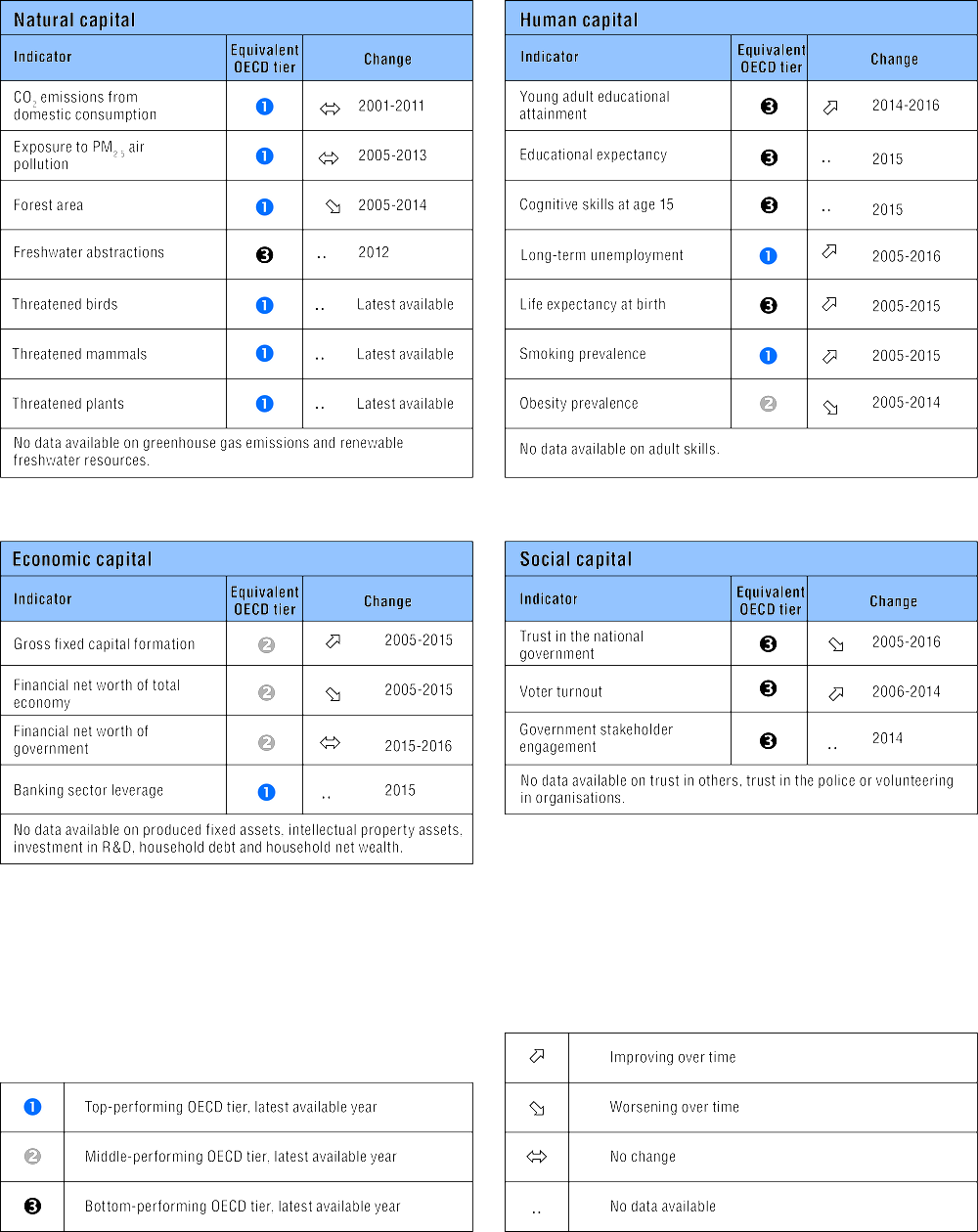How's life in Colombia?
Figure 5.37 shows Colombia’s relative strengths and weaknesses in well-being, with reference to both the OECD average and the average outcomes of OECD partner countries considered in How’s Life? 2017 (i.e. Brazil, Colombia, Costa Rica, Lithuania, the Russian Federation and South Africa).
Colombia has several areas of strength relative to both the OECD and partner countries. Housing affordability is good, and air quality (measured in terms of mean exposure to outdoor air pollution by fine particulate matter, PM2.5) is better than both the OECD and partner country averages. In addition, the employment rate, at 67.2% in 2016, was higher than the average for both the OECD (67%) and the partner countries (63.9%), while the long-term unemployment rate (below 0.6%) was the lowest among partner countries and well below the OECD average.
In the case of social support, almost 89% of Colombians report having friends or relatives whom they can count on in times of trouble, in line with the average for both the OECD (89%) and the partner countries (90%).
In several outcomes Colombia is above the average for the partner countries but below the OECD average. Life expectancy at birth, at 74 years, is above the average level among partner countries (72) but below the OECD average (80). Satisfaction with local water quality is also higher in Colombia: around 74% of Colombians say that they are satisfied with their local water quality compared to only 66% on average among all partner countries. Finally, 45% of Colombia’s people report feeling safe walking alone at night in the area where they live, which is slightly higher than the partner country average (43%) but well below the OECD average (almost 69%).
Colombia has some areas of weakness compared to both the OECD and other partner countries. 28% of employees regularly worked very long hours in 2016, well above 13% in the OECD and 9% in partner countries, on average. The rates of both adults’ upper secondary educational attainment (52%) and students’ cognitive skills at age 15 are among the lowest in both the OECD and partner countries. Voter turnout (44% in 2014) is the lowest, and the homicide rate the highest, across all OECD and partner countries.


